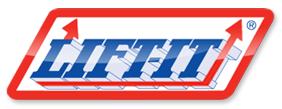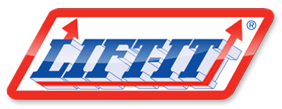| Wire Rope Sling Inspection |
|
A specific procedure for sling inspection is the best safeguard against injury, death and property damage. It is important that you employ a three stage level of inspection to ensure that slings are inspected with appropriate frequency. It is also important that all inspections must be done by trained and qualified personnel.
To detect possible damage, you should perform a visual inspection of the entire sling by making all parts of the sling readily visible. If necessary, remove dirt and grime so wires and components are visible. Look for any of the conditions listed in the Removal from Service Criteria. The following example depict some of the types of damage, but note that they are relatively extreme examples provided for illustration purposes only.
If you identify ANY of these types of damage, remove slings from service immediately, even if the damage you see is not as extensive as shown. Slings that are removed from service must be destroyed and rendered completely unusable. Never ignore sling damage or attempt to perform temporary field repairs of damaged slings. It is very important that slings are regularly and properly inspected. If you are not sure whether or not a sling is damaged, DO NOT USE IT.
|
| Sling Tag Requirements |
|
Identification Requirements- ASME B30-9, Section 9-2.7.1 states: Each sling shall be marked to show:
- Name or trademark of manufacturer.
- Rated load for at least one hitch and the angle
upon which it is based.
- Diameter or size.
- Number of legs, if more than one..
|

|
|
Sling identification should be maintained during the life of the sling by the sling user.
|
|
| Wire Rope Sling Removal From Service Criteria |
|
 Do not inspect Wire Rope slings by passing bare hands over the wire rope body. Broken wires, if present, may puncture hands. Do not inspect Wire Rope slings by passing bare hands over the wire rope body. Broken wires, if present, may puncture hands.
Slings shall be inspected throughout their entire length for evidence of damage. Wire Rope Slings shall be removed from service if any of the following is visible:
- A) Missing or Illegible Sling Tag.
- B) Broken Wires
|
| |
 |
| |
For cable-laid slings: 20 broken wires per lay.
For 6 part braided slings: 20 broken wires per braid.
For eight part braided slings: 40 broken wires per braid.
Either the broken wire or broken strand count shall apply separately to the one braid length or one lay length in cable-laid slings.
|
| |
 |
|
- C) Severe localized abrasion and scraping.
- D) Kinking, crushing, birdcaging or any other damage resulting in damage to the rope structure.
- E) Evidence of heat damage, usually manifested by metallic discoloration or the presence of internal lubricant.
- F) End attachments that are cracked, deformed or worn to the extent that the strength of the sling is substantially affected.
- G) Severe corrosion of the rope, end attachments or fittings.
- H) For hooks, removal criteria, as stated in ASME B30.10.
- I) For other applicable hardware, removal criteria as stated in ASME B20.36.
- J) Other conditions, including visible damage that cause doubt as to the continued use of the sling.
|
| Sling Damage Examples |
|
 If you identify ANY of these types of damage in a sling, remove it from service immediately, even if the damage is not as extensive as shown. Slings that are removed from service must be destroyed and rendered completely unusable. Never ignore sling damage or attempt to perform temporary field repairs of damaged slings. It is very important that slings are regularly and properly inspected. If you are not sure whether or not a sling is damaged, DO NOT USE IT. If you identify ANY of these types of damage in a sling, remove it from service immediately, even if the damage is not as extensive as shown. Slings that are removed from service must be destroyed and rendered completely unusable. Never ignore sling damage or attempt to perform temporary field repairs of damaged slings. It is very important that slings are regularly and properly inspected. If you are not sure whether or not a sling is damaged, DO NOT USE IT.
|
|

|
| Wire Rope Sling Considerations |
|
 Follow OSHA, ASME, Association, Industry and Manufacturer Guidelines. Be sure to read and understand the following information relative to proper sling usage: Follow OSHA, ASME, Association, Industry and Manufacturer Guidelines. Be sure to read and understand the following information relative to proper sling usage:
Lift-Planning & Evaluation
Purchase & Use Considerations
Repair and Testing
Hitches, Angles and Tension
Sling Care and Storage
Sling Training
Sling Protection
Rigging & Hitch Information
Mechanical Considerations
Sling Inspection Systems
|





